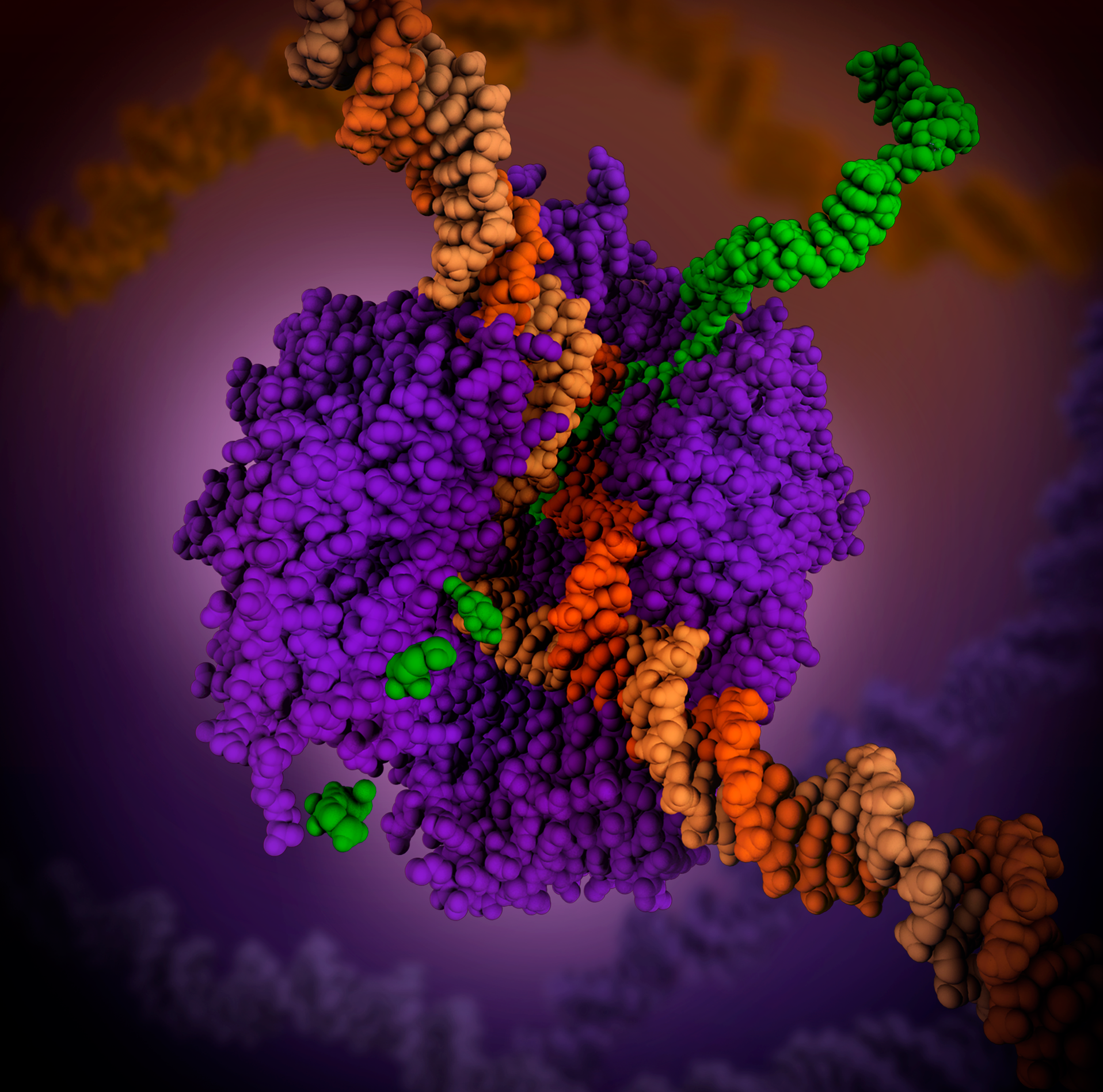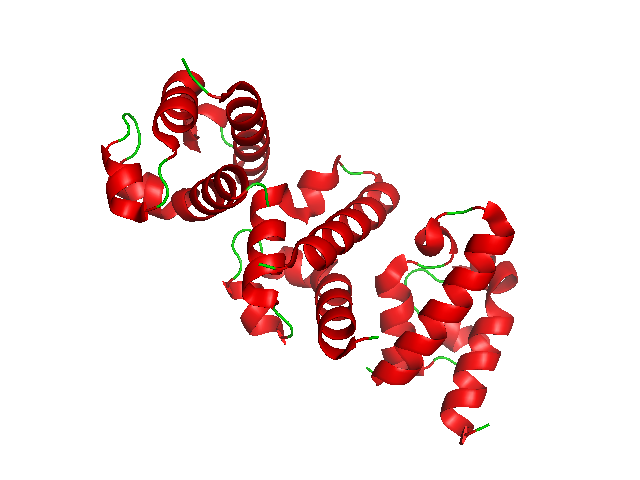|
Citrus Leprosis Virus C
''Cilevirus'' is a genus of viruses in the family '' Kitaviridae''. Plants serve as natural hosts. There are two species: '' Citrus leprosis virus C'' and '' Citrus leprosis virus C2''. History This genus was created in 2006 by Locali-Fabris ''et al'' in 2006.Locali-Fabris EC, Freitas-Astúa J, Souza AA, Takita MA, Astúa-Monge G, Antonioli-Luizon R, Rodrigues V, Targon ML, Machado MA (2006) Complete nucleotide sequence, genomic organization and phylogenetic analysis of Citrus leprosis virus cytoplasmic type. J Gen Virol 87(9):2721-2729 Structure Viruses in ''Cilevirus'' are non-enveloped, with bacilliform geometries. These viruses are about 50 nm wide and 150 nm long. Genomes are linear and segmented, bipartite, around 28.75kb in length. The genome is bipartite with two segments of 8745 nucleotide (RNA 1) and 4986 nucleotides (RNA 2) in length. The 5' terminals of both segments have a cap structure and have poly adenosine tails in their 3'-terminals. RNA 1 contains tw ... [...More Info...] [...Related Items...] OR: [Wikipedia] [Google] [Baidu] |
Citrus Leprosis Virus C
''Cilevirus'' is a genus of viruses in the family '' Kitaviridae''. Plants serve as natural hosts. There are two species: '' Citrus leprosis virus C'' and '' Citrus leprosis virus C2''. History This genus was created in 2006 by Locali-Fabris ''et al'' in 2006.Locali-Fabris EC, Freitas-Astúa J, Souza AA, Takita MA, Astúa-Monge G, Antonioli-Luizon R, Rodrigues V, Targon ML, Machado MA (2006) Complete nucleotide sequence, genomic organization and phylogenetic analysis of Citrus leprosis virus cytoplasmic type. J Gen Virol 87(9):2721-2729 Structure Viruses in ''Cilevirus'' are non-enveloped, with bacilliform geometries. These viruses are about 50 nm wide and 150 nm long. Genomes are linear and segmented, bipartite, around 28.75kb in length. The genome is bipartite with two segments of 8745 nucleotide (RNA 1) and 4986 nucleotides (RNA 2) in length. The 5' terminals of both segments have a cap structure and have poly adenosine tails in their 3'-terminals. RNA 1 contains tw ... [...More Info...] [...Related Items...] OR: [Wikipedia] [Google] [Baidu] |
Species
In biology, a species is the basic unit of classification and a taxonomic rank of an organism, as well as a unit of biodiversity. A species is often defined as the largest group of organisms in which any two individuals of the appropriate sexes or mating types can produce fertile offspring, typically by sexual reproduction. Other ways of defining species include their karyotype, DNA sequence, morphology, behaviour or ecological niche. In addition, paleontologists use the concept of the chronospecies since fossil reproduction cannot be examined. The most recent rigorous estimate for the total number of species of eukaryotes is between 8 and 8.7 million. However, only about 14% of these had been described by 2011. All species (except viruses) are given a two-part name, a "binomial". The first part of a binomial is the genus to which the species belongs. The second part is called the specific name or the specific epithet (in botanical nomenclature, also sometimes i ... [...More Info...] [...Related Items...] OR: [Wikipedia] [Google] [Baidu] |
Positive-sense Single-stranded RNA Viruses
In molecular biology and genetics, the sense of a nucleic acid molecule, particularly of a strand of DNA or RNA, refers to the nature of the roles of the strand and its complement in specifying a sequence of amino acids. Depending on the context, sense may have slightly different meanings. For example, negative-sense strand of DNA is equivalent to the template strand, whereas the positive-sense strand is the non-template strand whose nucleotide sequence is equivalent to the sequence of the mRNA transcript. DNA sense Because of the complementary nature of base-pairing between nucleic acid polymers, a double-stranded DNA molecule will be composed of two strands with sequences that are reverse complements of each other. To help molecular biologists specifically identify each strand individually, the two strands are usually differentiated as the "sense" strand and the "antisense" strand. An individual strand of DNA is referred to as positive-sense (also positive (+) or simply sense) ... [...More Info...] [...Related Items...] OR: [Wikipedia] [Google] [Baidu] |
Central America
Central America ( es, América Central or ) is a subregion of the Americas. Its boundaries are defined as bordering the United States to the north, Colombia to the south, the Caribbean Sea to the east, and the Pacific Ocean to the west. Central America consists of eight countries: Belize, Costa Rica, El Salvador, Guatemala, Honduras, Mexico, Nicaragua, and Panama. Within Central America is the Mesoamerican biodiversity hotspot, which extends from northern Guatemala to central Panama. Due to the presence of several active geologic faults and the Central America Volcanic Arc, there is a high amount of seismic activity in the region, such as volcanic eruptions and earthquakes which has resulted in death, injury, and property damage. In the pre-Columbian era, Central America was inhabited by the indigenous peoples of Mesoamerica to the north and west and the Isthmo-Colombian peoples to the south and east. Following the Spanish expedition of Christopher Columbus' ... [...More Info...] [...Related Items...] OR: [Wikipedia] [Google] [Baidu] |
Brazil
Brazil ( pt, Brasil; ), officially the Federative Republic of Brazil (Portuguese: ), is the largest country in both South America and Latin America. At and with over 217 million people, Brazil is the world's fifth-largest country by area and the seventh most populous. Its capital is Brasília, and its most populous city is São Paulo. The federation is composed of the union of the 26 States of Brazil, states and the Federal District (Brazil), Federal District. It is the largest country to have Portuguese language, Portuguese as an List of territorial entities where Portuguese is an official language, official language and the only one in the Americas; one of the most Multiculturalism, multicultural and ethnically diverse nations, due to over a century of mass Immigration to Brazil, immigration from around the world; and the most populous Catholic Church by country, Roman Catholic-majority country. Bounded by the Atlantic Ocean on the east, Brazil has a Coastline of Brazi ... [...More Info...] [...Related Items...] OR: [Wikipedia] [Google] [Baidu] |
Tenuipalpidae
Tenuipalpidae, also called flat mites or false spider mites, are a family of mites, closely related to the Tetranychidae. They are reddish and slow-moving and normally feed near the midrib or veins on the underside of leaves. Several species, among them ''Raoiella indica'', are important crop pests. Other common species include '' Acaricis urigersoni'' and the ''Brevipalpus'' species '' B. phoenicis'', '' B. californicus'', '' B. obovatus'', and '' B. lewisi''. Genera The family includes the following genera: * '' Aegyptobia'' Sayed, 1950 * '' Afronychus'' M. K. P. Smith-Meyer, 1979 * '' Australopalpus'' Smiley & Gerson, 1995 * ''Brevipalpus ''Brevipalpus'' is a genus of mites in the family Tenuipalpidae, the flat mites. [...More Info...] [...Related Items...] OR: [Wikipedia] [Google] [Baidu] |
Acari
Mites are small arachnids (eight-legged arthropods). Mites span two large orders of arachnids, the Acariformes and the Parasitiformes, which were historically grouped together in the subclass Acari, but genetic analysis does not show clear evidence of a close relationship. Most mites are tiny, less than in length, and have a simple, unsegmented body plan. The small size of most species makes them easily overlooked; some species live in water, many live in soil as decomposers, others live on plants, sometimes creating galls, while others again are predators or parasites. This last type includes the commercially destructive ''Varroa'' parasite of honey bees, as well as scabies mites of humans. Most species are harmless to humans, but a few are associated with allergies or may transmit diseases. The scientific discipline devoted to the study of mites is called acarology. Evolution and taxonomy The mites are not a defined taxon, but is used for two distinct groups of arachni ... [...More Info...] [...Related Items...] OR: [Wikipedia] [Google] [Baidu] |
Brevipalpus
''Brevipalpus'' is a genus of mites in the family Tenuipalpidae, the flat mites.''Brevipalpus californicus''. University of Florida, IFAS. The genus includes several species that are among the most important economic in the flat mite family.Childers, C. C. and J. C. Rodrigues. (2011) An overview of ''Brevipalpus'' mites (Acari: Tenuipalpidae) and the plant viruses they transmit. ''Zoosymposia'' 6, 180-92. Some ''Brev ... [...More Info...] [...Related Items...] OR: [Wikipedia] [Google] [Baidu] |
Citrus Leprosis Disease
Citrus leprosis (CL) is an economically important viral disease affecting citrus crops. This emerging disease is widely distributed in South and Central America, from Argentina to Mexico. The disease is associated with up to three different non-systemic viruses, which cause similar symptoms in the citrus hosts and are transmitted by the same vector, mites of the genus ''Brevipalpus''; although they have vastly different genomes. ''Citrus leprosis virus'' nuclear type (CiLV-N) is found in the nuclei and cytoplasm of infected cells, while ''Citrus leprosis virus'' cytoplasmic type (CiLV-C) is found in the endoplasmic reticulum. In 2012, a new virus causing similar symptoms was found in Colombia and it was named ''Citrus leprosis virus'' cytoplasmic type 2 (CiLV-C2) due to its close similarity to CiLV-C. The cytoplasmic type viruses are the most prevalent and widely distributed of the three species. Structure and genome CiLV-N has short, rod-shaped particles, 120 to 130 nanomete ... [...More Info...] [...Related Items...] OR: [Wikipedia] [Google] [Baidu] |
Citrus Leprosis Virus C2 . Plants in the genus produce citrus fruits, including important crops such as Orange (fruit), oranges, Lemon, lemons, grapefruits, pomelos, and lime (fruit), limes. The genus ''Citrus'' is native to South Asia, East Asia, Southeast Asia, Melanesia, and Australia (continent), Australia. Various citrus species have been used and domesticated by indigenous cultures in these areas since ancient times. From there its cultivation spread into Micronesia and Polynesia by the Austronesian expansion (c. 3000–1500 BCE); and to the Middle East and the Mediterranean (c. 1200 BCE) via the incense trade route, and onwards to Europe and the Americas ...
''Citrus'' is a genus of flowering trees and shrubs in the rue family, Rutaceae The Rutaceae is a family, commonly known as the rueRUTACEAE in BoDD – Botanical Derm ... [...More Info...] [...Related Items...] OR: [Wikipedia] [Google] [Baidu] |
RNA Polymerase
In molecular biology, RNA polymerase (abbreviated RNAP or RNApol), or more specifically DNA-directed/dependent RNA polymerase (DdRP), is an enzyme that synthesizes RNA from a DNA template. Using the enzyme helicase, RNAP locally opens the double-stranded DNA so that one strand of the exposed nucleotides can be used as a template for the synthesis of RNA, a process called transcription. A transcription factor and its associated transcription mediator complex must be attached to a DNA binding site called a promoter region before RNAP can initiate the DNA unwinding at that position. RNAP not only initiates RNA transcription, it also guides the nucleotides into position, facilitates attachment and elongation, has intrinsic proofreading and replacement capabilities, and termination recognition capability. In eukaryotes, RNAP can build chains as long as 2.4 million nucleotides. RNAP produces RNA that, functionally, is either for protein coding, i.e. messenger RNA (mRNA); or n ... [...More Info...] [...Related Items...] OR: [Wikipedia] [Google] [Baidu] |
Helicase
Helicases are a class of enzymes thought to be vital to all organisms. Their main function is to unpack an organism's genetic material. Helicases are motor proteins that move directionally along a nucleic acid phosphodiester backbone, separating two hybridized nucleic acid strands (hence '' helic- + -ase''), using energy from ATP hydrolysis. There are many helicases, representing the great variety of processes in which strand separation must be catalyzed. Approximately 1% of eukaryotic genes code for helicases. The human genome codes for 95 non-redundant helicases: 64 RNA helicases and 31 DNA helicases. Many cellular processes, such as DNA replication, transcription, translation, recombination, DNA repair, and ribosome biogenesis involve the separation of nucleic acid strands that necessitates the use of helicases. Some specialized helicases are also involved in sensing of viral nucleic acids during infection and fulfill a immunological function. Function Helicases are o ... [...More Info...] [...Related Items...] OR: [Wikipedia] [Google] [Baidu] |

_Lorryia_formosa_2_edit.jpg)

